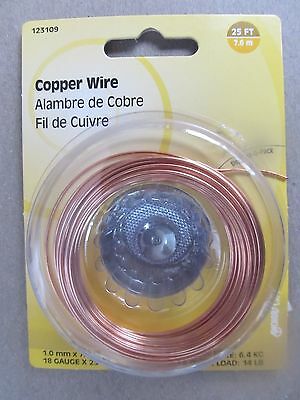-40%
Nitinol shape memory alloy wire 0.5mm (0.02"), 70 ºC Af (158 ºF), by the foot
$ 0.66
- Description
- Size Guide
Description
Nitinol Shape Memory Wire (SMA)0.5mm 70ºC A
f
, quantity = # of feet (single wire any length)
Promo listing. Quantities under 7 (<) ship without tracking in a white envelope
3-4 days delivery in USA; ships from California
a.k.a.: muscle wire, magic wire, shape memory alloy
Wire moves/straightens when heated to specific temperatures
Relaxes and becomes more pliable when cooled
Nitinol (an alloy of nickel and titanium), properly formulated and heat treated to react and change shape when heated.
All our wires are stocked on spools (not pre-cut) and we cut to the length of the order.
General Characteristics
The wire is very smooth with a lustrous dark coating on the outside. Light reflecting off of it sometimes appears in rainbow colors. Inside, wire is silver color. Cutting thicker diameter wire (1mm and especially 2mm) requires a good pair of cutting pliers. Nitinol is very abrasion resistant. It will slip and slide along itself. It will not react with most chemicals, will not corrode, and is non-allergenic.
The transition temperature indicated is the wire's A
s
(austenite start) temp. The change in the crystal structure takes place over a gradient of approximately 10 degrees. The hotter the temperature that the wire is exposed to, the faster and more dramatic the effect. For example, dropping a coiled up piece of 60º 2mm wire into boiling (100ºC) water will make it jump out faster and with more force than dropping an 80º wire. However, at room temperature (25 - 35ºC if you're in a hot climate) the 80º wire will be much more flexible than 60º and especially 40º wire.
Varieties
This listing allows you to choose the transition temperature of the wire. There is a dramatic difference which alloy you use because they are sensitive to the surrounding temperatures.
Click here for all available wires on one page.
NiTi (SMA) stock availability chart
15 ºC
30 ºC
40 ºC
50 ºC
60 ºC
70 ºC
80 ºC
0.5 mm
x
x
x
1.0 mm
x
x
x
x
2.0 mm
x
x
x
15ºC wire:
this is a difficult to use wire unless your application cycles to close to freezing temperatures. The wire is stiff and straight like spring steel at room temperatures. Place it in a fridge, and it will transform to a loose pliable wire that is easy to bend, like a cord. As you hold it in your hands outside of the fridge, it will return to its straight stiff shape as it warms up. Available in 1mm.
30ºC wire:
excellent characteristics for applications in colder climates where the ambient temperatures are below 20ºC. It can be activated with very little heat, possibly even body heat for neat tricks. Available in 1mm.
40ºC wire:
our most popular and recommended alloy. Recommended if you are new to nitinol for general experiments, demonstrations, etc. Available in 0.5mm (thin but strong), 1mm (very versatile), and 2mm (super strong, maybe could lift a car).
50ºC wire:
an excellent choice for 0.5mm wire instead of the 40ºC if you are in a hot climate and want the wire to be more pliable before it's activated. Available in 0.5mm.
60ºC wire:
an excellent all-around choice for 2mm wire, with a balance between fast activation at sub-boiling temperatures and flexibility at room temperature. Available in 2mm.
70ºC wire:
This is the same as our 1mm 80ºC wire, however, due to its thinner diameter, it activates at a lower temperature, so it is referred to as the 70ºC.
80ºC wire:
Our highest temperature alloys that remain the most pliable at room temperatures. Suitable for higher temperature activation (100ºC+). Available in 1mm and 2mm.
Memory v. Superelastic:
This listing is for the "shape memory alloy" (SMA) type wire (which moves/changes crystal arrangement when heated/cooled). It is also known as muscle wire. There is another type, called "superelastic". Superelastic NiTi, sometimes called fishing line, is similar to activated memory wire (for example, the 15ºC wire at room temperatures), but it remains that way at most temperatures (except very cold, e.g., -10ºC and below). It can stretch like a rubber band substantially without plastic deformation. We also have superelastic in stock in 0.5mm, 0.8mm, 1mm, and 2mm under a separate listing.
Suggestions
Our most popular wire is the 1mm 40ºC wire. It remains pliable at typical room temperatures and will straighten out very quickly when heated, without requiring the need to use dangerously hot temperatures such as boiling water. For colder climates, if your ambient environment will not exceed 20ºC, we recommend the 30ºC 1mm wire instead for even better performance.
Lower temperature wires tend to exhibit more strength. For example, the 15ºC alloys will react with much more force when heated. However, they should be much colder before activation, ideally close to freezing. Otherwise, they will already be partially engaged and the effect will not be as dramatic.The 2mm wires are very stiff when fully austenite (activated). Our most popular 2mm wires are the 60ºC and the 80ºC. If you like the 1mm 40º wire, substitute with a 60º if using 2mm because the 40ºC 2mm will be too stiff, unless the temperature is below 30ºC.
At Cold&Colder, we specialize in environmental control systems. We use the materials we sell and have an in-depth knowledge of their characteristics. Any advice or consulting is always free and a click away. Message us if you need any help. Thanks for looking!








